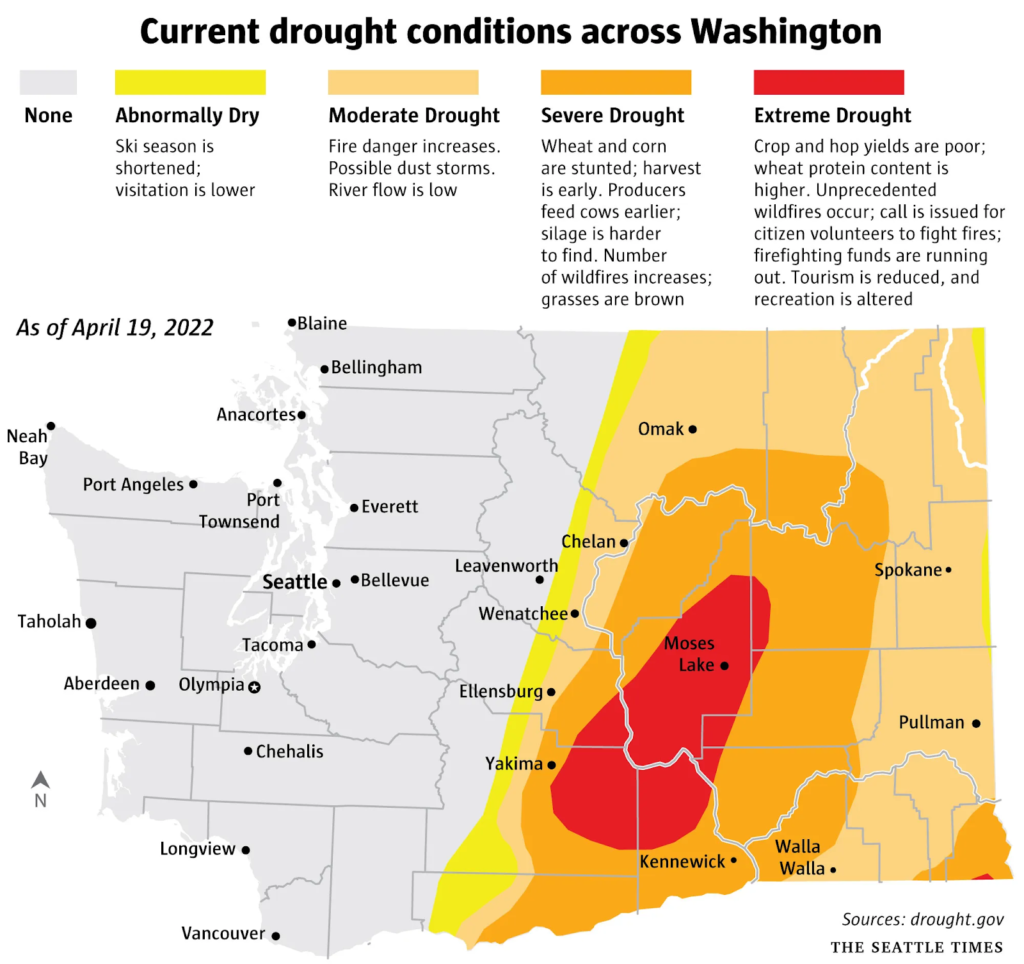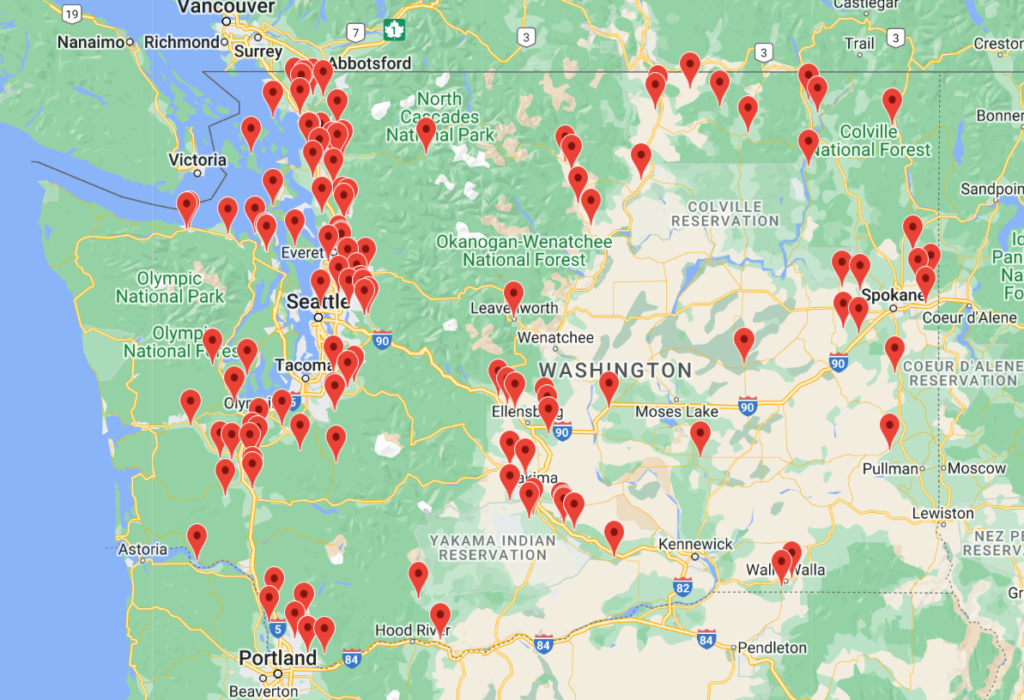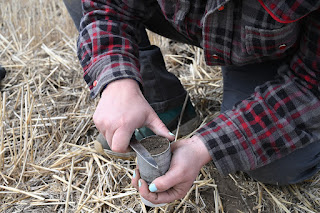Regenerative agriculture (RA), broadly defined, is the practice of any agricultural activity, such as farming or ranching, that improves the environment at the same time as producing food or other farming products.
There are regenerative farms all over the world, although each regenerative farm may use slightly different regenerative practices. This article will present benefits of regenerative agriculture in Washington State and provide several examples of regenerative farms and initiatives in the state.
Background information: What Is Regenerative Agriculture?
Table of Contents
Why Is Regenerative Agriculture Needed in Washington?
Regenerative Agriculture in Washington State
Why Is Regenerative Agriculture Needed in Washington State?
Agriculture is a major industry in Washington, as it generates $10.6 billion USD annually, makes up around 12% of the state’s economy, and creates 164,000 jobs. Because agriculture is such a large part of the state’s economy, it’s important that farms maintain high levels of production.
Washington State has a fairly wide range of local climates throughout the state, with the eastern half much hotter and dryer, and the western half much cooler and rainier. These climatic differences means that while there are regenerative farms across the state, they may use different regenerative practices to achieve different goals.
Agricultural challenges in Washington, including low soil fertility, drought, climate change, and population growth, are incentivizing farmers to switch from traditional to regenerative agricultural methods.
Low soil health and fertility: Washington’s soils are low in carbon, which can make it difficult to grow crops. Carbon-rich organic matter, such as plant residues in soil, are a crucial part of what makes soil healthy, and thus, what makes plants grow. Regenerative practices like cover crops, in which other plants are grown among the cash crop, help introduce organic matter into the soil. Regenerative agriculture may also increase soil’s ability to sequester (store) carbon.
Drought: In 2021, the state of Washington was hit by a historic drought. The eastern region of Washington was particularly affected, and has seen below-average rainfall and reduced amounts of water in rivers and streams. According to the U.S. Drought Monitor, nearly 30% of Washington State is currently experiencing severe drought (shown in orange on the map), with over half of the state experiencing “abnormally dry” conditions (shown in yellow). Regenerative agriculture can help alleviate some of the issues farmers face from drought by introducing farming practices that use less water. RA can also help water retain more moisture, meaning less water needs to be used overall.

Climate change: As climate change worsens, it is having increasingly negative impacts on Washington, including less precipitation and more climate events like drought. For example, Washington’s record-low snowpacks are attributed to climate change, and are a major driver of drought. Regenerative agriculture can not only help farmers adapt to climate change’s extreme conditions, but it can even help mitigate climate change by increasing carbon sequestration in soil.
Read more: Low Carbon Agriculture
Population growth: Washington State is the third-largest food and agricultural exporter in the entire country, despite more and more land becoming less productive due to overuse and climate change. As the country’s population grows, the demand for food also rises. Regenerative agriculture in Washington State can help produce more food on smaller areas of land, as RA can help increase crop yields.
Regenerative Agriculture in Washington State
Regenerative agriculture is happening in Washington in a number of ways. These include regenerative farms and legislation to advance regenerative agriculture initiatives.
Farms and Ranches
There are around 36,000 working farms in Washington State, 96% of which are family owned, and 67% of which are considered “small farms,” with less than 50 acres. Out of the 36,000 farms in the state, around 800 are organic, and many use at least one regenerative practice.
Hidden Penny Farm
Hidden Penny Farm, located in Port Angeles, Washington, raises poultry and grows organic fruits and vegetables. They use a variety of regenerative practices, including no-till farming. No-till farming, a farming technique to grow crops that uses the least amount of mechanical disturbance to soil as possible, can reduce soil erosion and increase the ability of water to penetrate soil (making it possible to grow using less water). You can order their food online, and they also plan on selling their crops through a “Pay What You Can Farmstand” that opens in June.
3-Bell Ranch
This ranch in Oroville, Washington produces chicken, beef and lamb, as well as some crops. They don’t use chemical fertilizers or pesticides, preferring the use of natural fertilizers. They also use rotational grazing for their livestock, a process in which grazing animals are rotated and only allowed to graze in one portion of the pasture while the other sections “rest”. Rotational grazing increases pasture yields, as plants and soil have more time to recuperate between grazing. This has the added benefit of providing high quality forage for the livestock.
Others
There are many other regenerative farms in Washington State. You can find them using Regeneration International’s regenerative farm map.

Source: Regenerative Farm Map, Regeneration International
Legislation
The Sustainable Farms And Fields Bill: Senate Bill 5947
The Washington State Senate passed Bill 5947 in April 2020, and it became effective in June 2020. The bill provides funding ($1 million USD) to create a government grant program for farmers who use agricultural practices that sequester carbon or reduce the use of greenhouse gasses. The bill does not force any farms to adopt regenerative practices, but it hopes to encourage farmers who are interested by providing them with money to do so. The bill may help incentivize farmers who are concerned that by switching to regenerative farming, they will lose profit initially. The grants created by this bill provide financial “padding” for any potential initial losses so that farmers can increase profits through regenerative agriculture in the long run.
The Washington Soil Health Initiative: Senate Bill 6306

The Washington Soil Health Initiative (WaSHI), which came into effect in June 2020, is a program run by the Washington State Department of Agriculture (WSDA) and Washington State University. The initiative seeks to study soil health throughout the state through long-term research projects, and then create policy proposals to increase the state’s soil health. The WSDA describes the program as a “win-win-win opportunity for farmers, the environment, and the people of Washington” due to the major benefits that increased soil health creates for Washington State.